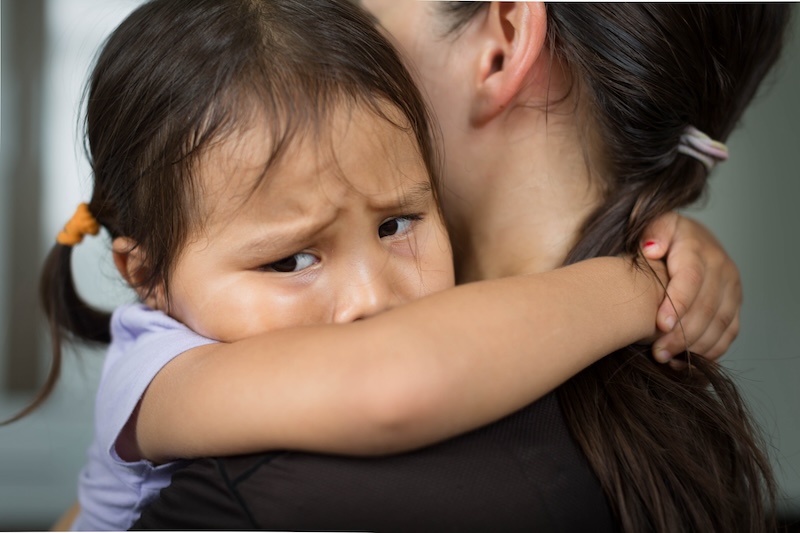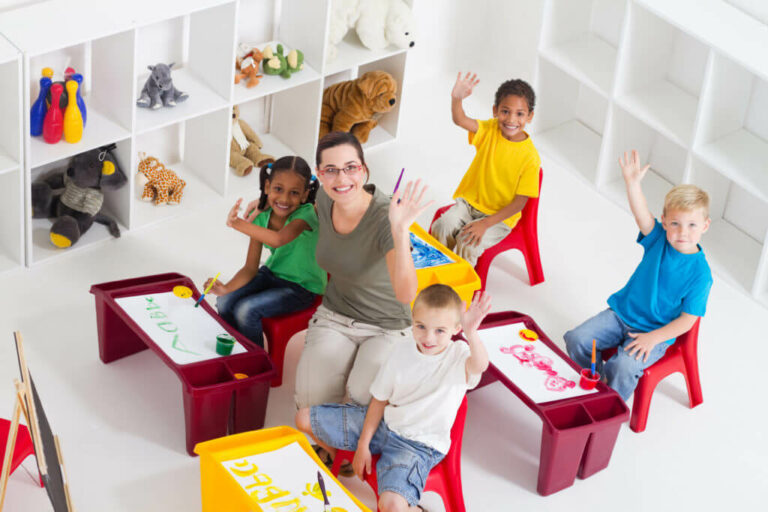Leaving your child at daycare or preschool for the first time can be an emotional experience for both of you. As parents, we want our children to feel safe, secure, and happy in their new environment. But for many children, the transition to a new caregiver and a new setting can trigger separation anxiety, leading to tears, clinginess, and even tantrums. At Heritage Learning Center, we understand the challenges of separation anxiety and are here to offer guidance and support to both children and parents as they navigate this common developmental stage. We believe that with understanding, patience, and the right strategies, separation anxiety can be managed effectively, creating a positive and confident start to your child’s learning journey.

What is Separation Anxiety?
Separation anxiety is a normal developmental stage in which children experience distress and anxiety when separated from their primary caregivers. It typically begins around 8-14 months of age and peaks between 18 months and 2 years. While it’s a natural part of development, separation anxiety can be challenging for both children and parents. Children may express their anxiety through crying, clinging, tantrums, or even physical symptoms like stomachaches or headaches. Understanding the root of this anxiety is the first step in helping your child navigate this phase.
Why Do Children Experience Separation Anxiety?
Separation anxiety stems from a child’s developing understanding of object permanence – the realization that things and people continue to exist even when they’re out of sight. When a child is separated from their caregiver, they may fear that the caregiver is gone forever and may not return. This fear can be overwhelming and lead to significant distress. It’s important to remember that separation anxiety is not a sign of weakness or bad parenting; it’s a normal part of a child’s development and a testament to the strong bond they have with their caregivers.
Tips for Managing Separation Anxiety
Easing your child’s anxiety involves creating a sense of security, predictability, and trust. Here are some strategies that can help:
- Establish a Consistent Routine: A predictable routine helps children feel safe and secure. Establish a consistent drop-off and pick-up routine, and stick to it as much as possible.
- Practice Short Separations: Start with short separations, gradually increasing the duration as your child becomes more comfortable. This could involve leaving your child with a trusted caregiver for short periods while you run errands.
- Create a Comforting Goodbye Ritual: Develop a special goodbye ritual, such as a hug, kiss, and a special phrase, to signal that you’re leaving but will return.
- Provide a Transitional Object: A favorite blanket, stuffed animal, or toy can provide comfort and security when your child is feeling anxious.
- Stay Calm and Confident: Children pick up on their parents’ emotions. If you’re anxious or upset, your child is likely to feel the same way. Maintain a calm and confident demeanor during drop-offs.
- Communicate with Your Child’s Caregiver: Stay in communication with your child’s caregiver to get updates on their progress and address any concerns.
The Heritage Learning Center Approach: Nurturing Confidence and Independence
At Heritage Learning Center, we understand the importance of creating a nurturing and supportive environment for children experiencing separation anxiety. Our experienced teachers are skilled in helping children feel safe, secure, and loved while away from their parents. We create a warm and welcoming atmosphere where children can explore, learn, and grow at their own pace. We work closely with parents to develop individualized strategies for managing separation anxiety, ensuring a smooth and positive transition for every child.
Building a Strong Foundation for Learning
Separation anxiety is a normal part of childhood development, but it can be challenging for both children and parents. By understanding the causes of separation anxiety and implementing effective strategies, you can help your child navigate this phase with confidence and ease. At Heritage Learning Center, we’re committed to partnering with parents to create a positive and nurturing learning environment where children can thrive. Contact us today to learn more about our programs and how we can support your child’s social and emotional development.




